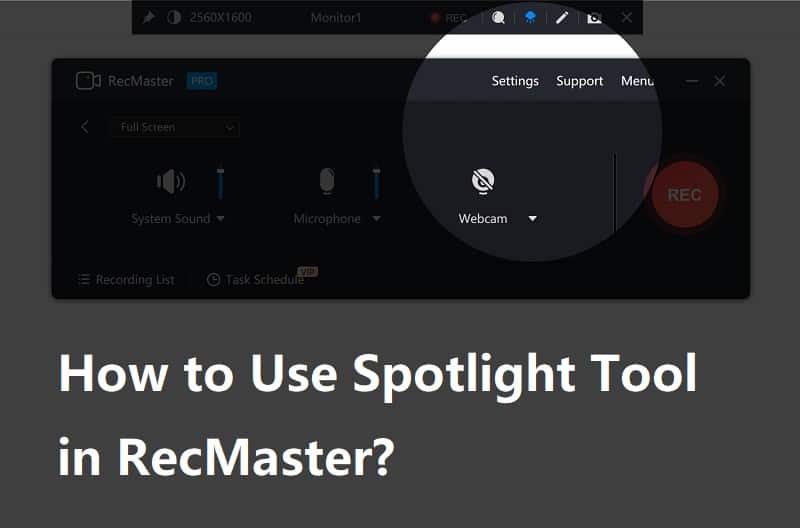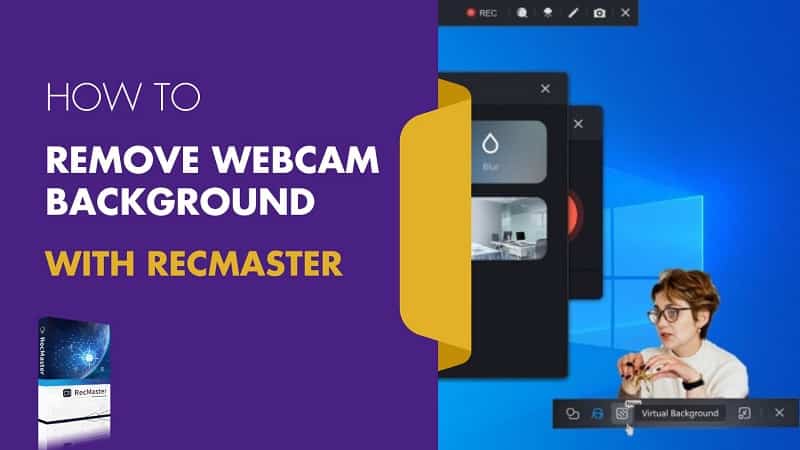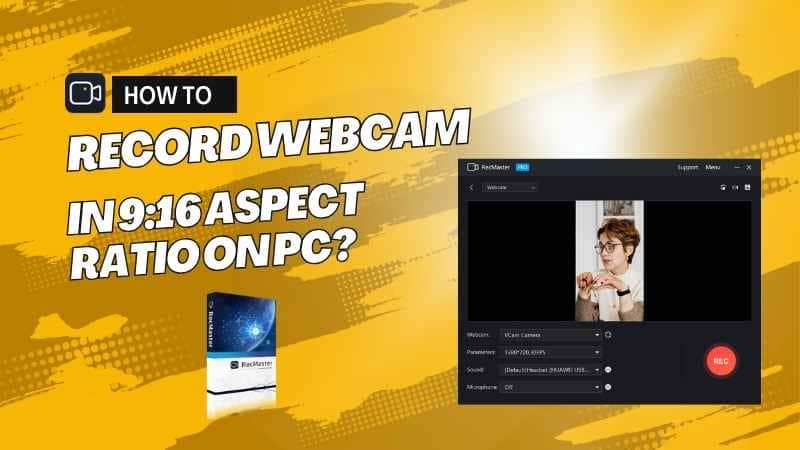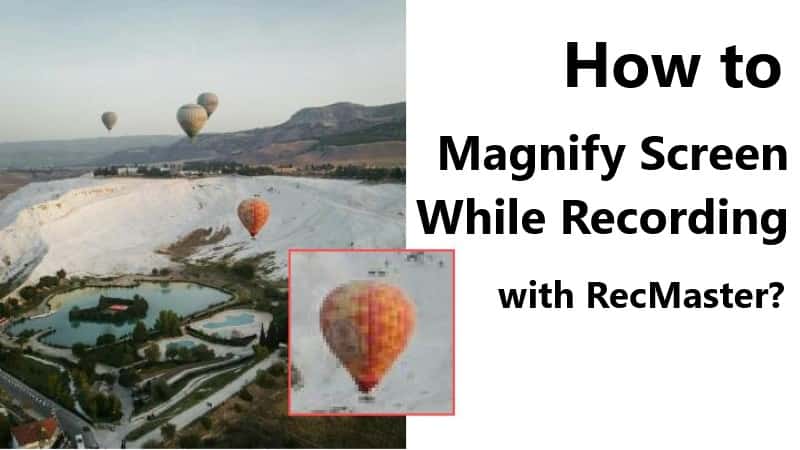Ever wanted your tutorials to look like they were made by a pro — crisp video, clear audio, and no awkward “um”s? Well, here’s the good news: you don’t need a studio setup or fancy gear. With just a bit of planning, the right mindset, and RecMaster by your side, you can easily produce clean, engaging tutorial videos that learners actually enjoy watching from start to finish. In this step-by-step guide, we’ll walk you through everything — from setting up your screen recorder to polishing your final edit — and we’ll sprinkle in a few real-world tips and tricks you can start using today. So, let’s jump right in and learn how to record tutorials like a pro.
Table of Contents
Why Choose RecMaster?
RecMaster feels like it was made for creators who’d rather focus on teaching and sharing knowledge than fiddling endlessly with complicated tools. From the moment you open it, everything feels intuitive, powerful, and reliable — offering screen, webcam, and custom-region recording options, along with built-in editing and annotation tools to polish your content effortlessly.
Whether you’re creating software demos, product walkthroughs, or full-length online courses, RecMaster gives you all the features you need to deliver professional-quality videos in no time. In short, it’s designed to make your workflow smoother, your tutorials sharper, and your results more impressive — helping you record tutorials like a pro with minimal effort.
Getting Started with RecMaster
Before you hit “Record,” taking a few moments to set things up properly can make a huge difference. After all, a strong foundation ensures your tutorials not only look sharp but also sound clean and professional right from the start.
System Requirements (Quick Check)
You don’t need a beast of a computer — just a modern Windows or macOS machine with a decent processor and plenty of free space. However, if you’re planning to record in 1080p/60fps or even 4K, it’s smart to have some extra storage ready to handle those larger files. Before you begin, double-check that your microphone and webcam drivers are up to date, so everything runs smoothly once you hit that record button.
Installing and Activating RecMaster
First, head over to the official RecMaster website and download the installer, then simply follow the on-screen steps to complete the setup.
Next, before jumping into your first recording, make sure to activate it using your license key — this helps prevent any annoying interruptions mid-session. This step can be ignored if you are using the trial version.
Once everything’s up and running, take a minute to explore the interface. That quick tour will pay off later, saving you time and frustration when you start recording for real.
Planning Your Tutorial
Great tutorials are always planned before they’re recorded. To record tutorials like a pro, think of planning as your creative GPS — it not only keeps your audience on track but also keeps them engaged from start to finish. By mapping out your flow ahead of time, you’ll avoid confusion, reduce retakes, and make the recording process feel effortless.
Define Your Learning Goals
Before you start recording, take a moment to ask yourself: what should viewers be able to do after watching this video?
Once you’ve figured that out, choose one clear main goal and two or three smaller supporting ones.
By keeping your goals focused, you’ll naturally create shorter, more digestible lessons that are easier for your audience to follow and remember.
Script and Storyboard — Keep It Tight
Even if you’re a natural speaker, having a script can make a big difference in keeping you organized.
Start by jotting down key talking points, or go all-in with a full script if you prefer a more structured approach.
Either way, you’ll stay on track and reduce the need for multiple retakes.
Micro-Scripting: One Idea per Clip
Break big topics into smaller, more manageable videos — around 5–10 minutes each.
Not only does this boost SEO, but it also helps viewers absorb information without feeling overwhelmed or fatigued.
Think of each video as a single puzzle piece — easy to watch, easy to remember, and easy for your audience to put together into the bigger picture.
Recording Settings That Matter to Record Tutorials Like a Pro
Now that your plan is ready, let’s make your recording look and sound great.
Video Resolution and Frame Rate
For most tutorials, 1080p at 24fps works perfectly — it delivers sharp visuals while keeping file sizes manageable. However, if your video includes fast movements, such as gaming clips or animations, go for 30fps for smaller file size or 60fps to ensure smooth playback. Reserve 4K recording for situations where every detail really matters, so you get the best quality without unnecessary strain on your system. For the best output quality, Same as computer screen option is recommended for the Output Resolution. (Menu>>Settings>> Video)
Format, Bitrate, and Compression Choices
The defaut format is MP4 (H.264) for maximum compatibility.
For YouTube, stick to your original resolution (Same as computer screen) and VBR + Original (100%) Quality.
For e-learning platforms, you can lower the quality slightly to reduce file size.
For the best match of output quality and file size, you can use the default or recommended settings.
Audio Settings & Mic Selection
Audio can truly make or break your video. For the best results, always use a dedicated external microphone instead of relying on your laptop’s built-in mic. In RecMaster, select your microphone under Sound Settings and take a moment to test it before you start recording. Also, keep your input level around -6 dB to ensure clean, distortion-free sound throughout your tutorial. (Choose Advanced on the drop-down menu of Microphone or System Sound to open Sound Settings)
Webcam and Picture-in-Picture Options
Viewers naturally connect better when they can see you on screen.
To make this happen, enable RecMaster’s Picture-in-Picture (PIP) mode to overlay your webcam feed on your screen recording. (Enable the Webcam after choosing a recording mode)
For the best effect, keep the PIP small and unobtrusive — typically placing it in the bottom corner works perfectly.
Key RecMaster Features to Use
RecMaster offers smart features that simplify your recording process and elevate your results.
Full Screen, Region, and Webcam Modes
-
Full Screen: Great for software tutorials or presentations.
-
Custom Area/Program Window: Focuses on specific area, apps or windows.
-
Webcam Mode: Perfect for intros or commentary videos.
You can even combine screen + webcam for a professional layout.
Scheduled Recording & Task Recorder
RecMaster’s scheduler effectively automates your recordings, so you don’t have to constantly monitor or babysit the process. In addition, you can even predefine multiple tasks in advance, making repeated recording sessions easier, faster, and more organized.
Annotations, Cursor Effects, and Hotspots
Highlight key actions using annotations, arrows, and on-screen text. Additionally, use cursor effects and click sounds to guide your viewers’ attention — but remember, don’t overdo it; less is always more.
Step-by-Step Recording Workflow to Record Tutorials Like a Pro
Here’s a repeatable routine that guarantees clean, confident recordings every time.
Pre-Record Checklist
-
Close all unnecessary apps and tabs.
-
Turn on “Do Not Disturb.”
-
Clear your desktop or use a clean workspace window.
-
Test your mic and webcam.
-
Verify RecMaster settings: resolution, FPS, and save path.
Recording: Voice, Pace, and Retakes
Speak naturally, as if you’re teaching a friend. And if you happen to mess up, simply pause and repeat the line — it’s easy to fix later during editing. Remember, don’t chase perfection; focus on clarity instead.
Recording Tips & Tricks (Shortcuts and Hotkeys)
Memorize the hotkeys for Start, Pause, and Stop. Also, use the countdown timer to give yourself a moment to prepare before the recording begins. Together, these little shortcuts help keep your workflow smooth and efficient.
Editing Inside RecMaster (Quick Polishing)
You don’t need a full editing suite. Fortunately, RecMaster’s built-in editor can handle most fixes quickly and efficiently, so you can polish your tutorials without extra software. If you need advanced editing features, you can find some other professional editors.
Trimming, Cutting, and Merging Clips
Cut awkward pauses, trim the beginnings and endings, and merge clips seamlessly.
Adding Subtitle, and Delogo
Subtitles improve accessibility. You can add subtitles easily with RecMaster editor. In addition, you can delogo to cover the part you don’t hope to show in the video.
Exporting & Optimizing for Platforms
The final step — exporting your masterpiece for your audience.
Upload Tips: YouTube, LMS, and Social Media
Create platform-optimized versions:
-
Full tutorials for YouTube or your learning site.
-
Short clips (under 90 seconds) for TikTok, LinkedIn, or Instagram.
Use clear, keyword-rich titles and detailed descriptions to boost your video’s visibility. Additionally, add timestamps to make navigation easier for your viewers and improve overall engagement.
Advanced Tips to Sound & Look Professional
Small improvements make a big impact.
Mic Choice, Room Treatment, and Audio Cleanup
Use a pop filter and add soft materials, like curtains or foam, to help reduce echo. Additionally, record a few seconds of silence (room tone) at the start, and then use noise reduction tools later if needed to clean up your audio.
Lighting, Background, and Framing
Light your face from the front — even a simple desk lamp or ring light can make a big difference.
Next, frame your webcam so your eyes sit about one-third from the top of the screen.
Finally, avoid cluttered backgrounds; a clean wall or a subtle blur instantly looks more professional.
Common Problems & Quick Fixes
-
Audio pops: Use a pop filter and lower mic gain.
-
Laggy video: Close extra apps or lower frame rate.
-
Huge files: Reduce bitrate or record a smaller region.
-
Mic not detected: Check OS privacy permissions for RecMaster.
Wrap-Up: Your Final Checklist
Before publishing your video:
✅ Audio tested
✅ Captions added
✅ Intro/outro checked
✅ SEO title and thumbnail ready
That’s it — you’re ready to publish! Remember, progress beats perfection.
Moreover, every tutorial you record builds your skill and authority.
With RecMaster handling the tech, you can focus on bringing the teaching magic to your audience. 🎬✨
We hope you’ve found these tips helpful on how to record tutorials like a pro. Now, to make things even clearer, let’s dive into some frequently asked questions you might have.
Frequently Asked Questions (FAQs)
1. What resolution and frame rate are best for tutorials?
1080p at 30fps works well for most tutorials. However, if your content involves high-motion scenes, such as animations or gaming, consider using 60fps to ensure smooth, clear playback. For the best output quality with the smallest file size, Same as computer and 24fps is recommended.
2. How can I fix echoey audio?
Use a closer mic position, add soft furnishings (like curtains), or enable RecMaster’s noise suppression option. The RecMaster Sound Settings can be opened by selecting Advanced on the drop-down menu of System Sound.
3. Should I record screen and webcam together?
Yes, if you want natural timing and engagement. However, recording separately gives you more control during editing with professional editors, so ultimately, choose the approach that best fits your style and workflow.
4. How long should a tutorial be?
Keep each lesson between 5–15 minutes. For longer topics, break them into mini-tutorials to maintain viewer engagement and improve retention.
5. Can RecMaster record webinars automatically?
Absolutely. In fact, you can use Scheduled Recording to automate captures, which is perfect for live sessions or any time-based recordings. This way, you never have to worry about missing a moment.

RecMaster
Screen recording made easy.
Record every moment on your PC or Mac within few clicks.
Download Download
-
How to Record Tutorials Like a Pro Using RecMaster?
-
The Top Halloween Screen Recorder Deals 2025
-
Step-by-Step Guide: How to Record Gameplay Without Lag?
-
RecMaster’s Secret Weapon: The Full Guide to Using the Annotation Tool for Killer Tutorials
-
RecMaster Pro-Tip: Direct MP3 Output for Scheduled Recordings (Audio-Only) 🎧
-
How to Promote Your Game with a Stunning Gameplay with RecMaster?
-
The Ultimate Guide: How to Record Mafia: The Old Country Gameplay with RecMaster?
-
How to Record Gemini Storybook with RecMaster?
-
How to Record Bendy: Lone Wolf Gameplay with RecMaster?
-
How to Set 1-Click Beauty with RecMaster for a Better Look?
-
How to Record in the Best Video Quality with RecMaster (with VBR or CBR)
-
How to Blur Your Webcam Background in RecMaster: A Quick Guide
-
How to Use Spotlight Tool in RecMaster?
-
How to Remove Webcam Background with RecMaster (Windows Tutorial)
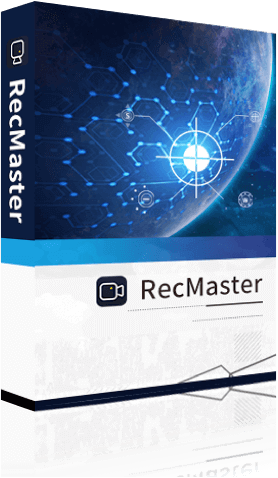
RecMaster – Record Every Moment on Your Computer Screen
Record 1080p or even 4K clips at 60fps to maintain the high quality still.
Flexible settings for mouse cursor effects, watermark and annotations.
Preloaded with recording scheduler, video editor. Allow one-click sharing.
Related & Hot Articles
Subscribe to keep up with the latest software discounts , news, and updates.
